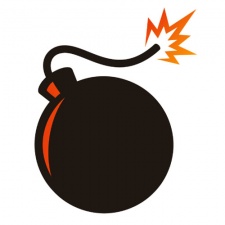Talk to any half-decent F2P mobile game developer and the talk will be of retention.
Typically measured in terms of industry standard metrics ranging from Day 1, Day 7 to Day 30, it records the percentage of your players who stick with the game over that period of time.
Indeed, it's so important that companies such as Zynga have cited it in their financials, when refering to the potential success of games such as CSR Racing 2.
But find one metric everyone can agree on, and someone going the raise the ante.
Ain't no game
In the case of retention, that someone is Kabam CEO Kevin Chou, who has aggressively suggested that developers need to move from D30 to D365+ retention.
In a guest column on Venturebeat, he comments:
"Traditional retention metrics simply do not provide utility for where our company and the broader industry is heading."
Adding... "D1, D30, and even D90 metrics are not predictive of long-term success. We now think exclusively in terms of years - not days, weeks, or months."
Keep them coming back
Of course, this approach isn't totally new.
We now think exclusively in terms of years - not days, weeks, or months.Kevin Chou
Back in 2013, we spoke to a certain Gabe Leydon, CEO of Machine Zone (now MZ), who was talking about his approach to the then-unlaunched Game of War.
"The bottomline is you can't make money with free-to-play games if people aren't playing your game," he told us.
"Free-to-play is the monetisation of time and this game [Game of War] is going to running for years."
Which, indeed, it has been doing.
Big bets
As for Kabam, which is yet to walk its talk in a way that MZ has done, it finds itself in a tricky situation.
After selling off the majority of its legacy games, killing some in-development projects, and restructuring its workforce, it now only has three titles globally live.
Star Wars: Uprising and Fast & Furious: Legacy aren't particularly successful, so the entire company's future rests on Marvel: Contest of Champions, which certainly is.
Kabam has also just announced a big licensing deal with forthcoming movie franchise Avatar, but that game won't be released until 2017.
Indeed, following its 'less is more' philosophy means Kabam is investing more, much more - Chou says "a Kabam game before factoring in marketing and live services costs on average $14 million" - in its games.
This obviously makes sense if the game in question is an annualised +$100 million hit like Marvel: Contest of Champions, but such a high risk, high reward strategy becomes an issue if a Fast & Furious: Legacy is followed by a Star Wars: Uprising.
Not many companies can afford a $20 million bet per game launch.
Boom or bust
Indeed, as the mobile F2P market consolidates and gets increasingly competitive, Supercell aside, it's not clear that the market leaders are improving their hitrate.
Glu Mobile is going through a difficult sequence - James Bond: World of Espionage, Katy Perry Pop, Britney Spears: American Dream - while for every Star Wars: Galaxy of Heroes EA has a Minions Paradise.
Yet for companies like Kabam, who want (or because of their high levels of VC funding) have to play at the top table, this all-in approach appears to be the only way to operate.
As always happens in a maturing market, the middle ground of a company worth several hundred million dollars valuation is disappearing fast.
Still, when the big investment works - as it appears to be doing in terms of the 12 month soft launch investment Zynga made with CSR Racing 2 - the company lives to thrive, or at least fight another year.
When it doesn't...
Let's just say we expect a lot more consolidation to occur in the mobile games market for the remainder of 2016.






















